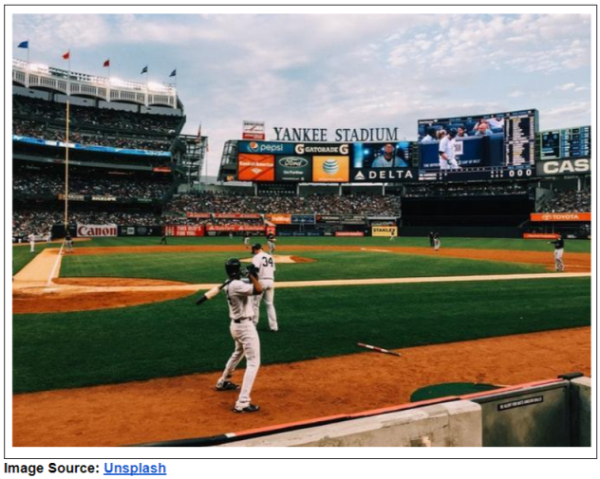Views: 14
Baseball might be America’s favorite pastime, but the game has changed over the years. Players are more powerful than ever. They’re throwing the ball faster and hitting harder — and the stakes are higher. While that makes for more exciting games, it also puts players at a greater risk for injury.
From 2005 to 2008, there was a 37% increase in injuries in the MLB. Most were caused by line drives, foul balls, or getting hit with a batted ball. While pitchers and catchers are at the greatest risk of getting hit in the head with a ball, no one on the field is completely safe.
In both 2011 and 2015, only 11 concussions were reported in the MLB. That might not seem like many, but you have to consider the fact that until recently, the league wasn’t paying as much attention to the risks of concussions as they are now. Most of the focus on concussions in sports has been on football, even to the point where Hollywood made a big-budget film about it.
While baseball’s 11 concussions in 2015 might not compare with over 100 concussions in the NFL, there’s a good chance not all concussions were adequately reported. Because baseball hasn’t gotten as much attention in this arena, it’s easy to deny the impact of concussions, whereas it’s harder in the oft-scrutinized NFL.
Is Baseball as Dangerous as Other Sports?
Even though football is probably the first thing that comes to mind when you think about concussions, other sports can be just as dangerous when the proper safety precautions aren’t in place. Soccer, volleyball, and hockey are high up on the list too.
There are both short- and long-term effects of concussions. Some of the possible immediate signs are:
- Headache
- Dizziness
- Loss of balance
- Blurred vision
- Brain fog
Professional athletes, unfortunately, often have to deal with the aftermath of multiple concussions for years to come. This can result in class action lawsuits against leagues or lasting mental health issues. The lasting effects of concussions include:
- Difficulty concentrating or remembering things
- Having trouble sleeping
- Irritability
- Depression
Concussions have been in the spotlight in the NFL in the aftermath of several players over the last few years taking their own lives. Studies done on their brains afterward revealed that they all had something in common: a disease known as chronic traumatic encephalopathy (CTE). As of 2017, out of 111 players’ brains tested, 110 were found to have this disease, which is believed to be caused by repeated blows to the head.
In 2012, Cincinnati player Ryan Freel, who suffered at least 10 concussions during his MLB career, committed suicide and was posthumously diagnosed with CTE. It’s important to understand that these lasting, long-term effects aren’t just impacting football players.
The Future and Safety of Baseball
All sports need to look at making improvements when it comes to safety and the well-being of their players. Sports are as popular as ever for kids, including baseball. Head injuries are still prominent in youth baseball and softball, and the most common cause of brain injuries is not properly wearing a helmet. This can lead to serious damage if a young player gets hit with a ball or bat.
Multiple concussions can have severe effects on a young athlete, causing problems with their comprehension, social relationships, emotional health, and even physical activity. The biggest problem these young players often face is not getting the treatment they need for concussions immediately. Far too often, players aren’t taken out of the game and looked at.
Concussions are just as prominent in college sports, with 10,500 concussions reported from college athletes in the last five years. In both high school and college sports, baseball concussions, in particular, are on the rise. While the NCAA has dedicated time and money to improve this, college baseball is just one of the many sports that remains dangerous when it’s done on a competitive level.
What Can Be Done to Prevent Injuries?
Whether baseball is played on a little league team or at a professional level, there will always be risks involved. As technology continues to evolve, things like stronger helmets and other types of equipment can be used to prevent injuries. The MLB has also adapted (and will likely continue to adapt) their concussion protocol to keep players safe.
There are also ways players can reduce their risk of injuries, including:
- Wearing proper safety gear
- Taking breaks
- Staying healthy
- Reporting any injuries, dizziness, or pain immediately
- Prevent steroid use, which can lead to aggressive behavior and increased risk-taking
As more research continues to be done about the effects of concussions, more major league sports will likely be in the spotlight, including baseball. That’s certainly not a bad thing, considering an MLB pitcher can lob a baseball toward a batter’s head at speeds approaching 100 mph. The more attention that can be drawn toward the MLB’s concussion problem, the sooner we can expect improvements in safety and regulations to come from the league.




One Comment
Pingback: How Medical Technology Is Transforming Healthcare in Baseball - Baseball Reflections